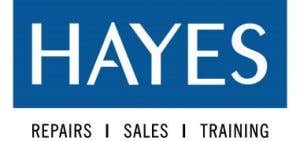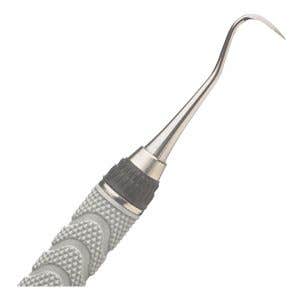Safe Instrument Processing
Protect your patients, your staff, and your instrument investment
Proper instrument care and processing is paramount to protecting your patients, your staff and your instrument investment. By following specific guidelines when handling and processing instruments, you minimize risk of injury and get more life out of each instrument. Always wear proper protective equipment when handling instruments
PRE-SOAKING
The key to pre-soaking is not to let blood or other bio-fluids dry on your instruments, thus preventing rust and corrosion. If you are not going to process your instruments within five minutes of finishing a procedure, we recommend using Hayes Triple Enzyme Cleaner as a pre-soak. You can also spread instruments out on a tray and spray them with Hayes Triple Enzyme Foam Spray Cleaner to keep them wet until you put them in an ultrasonic cleaner or washer. Leave instruments in an open position.
CLEANING
We recommend using an ultrasonic cleaner or an automatic washer for cleaning instruments. Instruments need to be completely clean in order to ensure proper sterilization, and it is best to separate dissimilar metals before cleaning. Be especially careful to separate carbide burs from instruments. These should be cleaned separately, or kept in a separate beaker. If you use an ultrasonic cleaner, change your ultrasonic solution at least once a day, or more frequently if it becomes visibly cloudy.
RINSING & DRYING
Ideally, instruments should be rinsed in distilled or demineralized water. It’s very important to completely dry your instruments to prevent spotting. Instruments may be patted dry with a thick towel to prevent injury, and the towels should not be treated with bleach or harmful chemicals.
LUBRICATING
It’s essential to lubricate all instrument areas where there is metal-to-metal contact, including hinges, box locks, screws and blades. Weekly lubrication prevents spotting, staining, corrosion or sticking. You should use only dental-grade lubricant, not industrial lubricant. Apply 2 to 3 drops of Hayes OneStep™ lubricant directly into the hinge. Simply wipe off any excess oil.
WRAPPING & STERILIZING
When you wrap your instruments for sterilization, separate dissimilar metals. Keep all instruments in open or unlocked position because hinges and box locks can fracture during heat expansion. Wrap instruments in bags, cassettes, surgical towels or containers with an indicator inside. Autoclaving is the only acceptable method for sterilizing instruments. Always let the sterilizer complete the drying cycle and never handle wet bags because this can transfer bacteria from hands to instruments. Storing wet instruments can also cause corrosion.
NEED MORE HELP?
Hayes offers instrument processing training for 1 CE credit. We come to you. Call to schedule an appointment!




